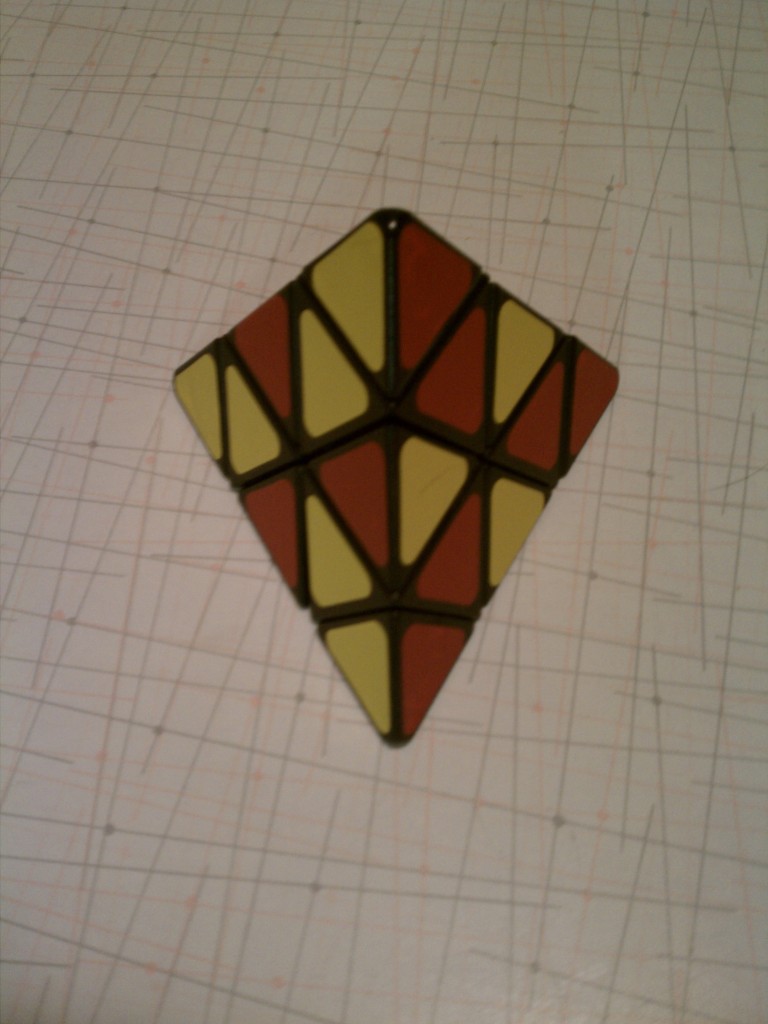I took my pyraminx to work on Friday and let Tom borrow it for a while, so of course he beat my times within hours. In my defense that means he had it almost as long as I’d seriously worked at it, though he was at work and hopefully wasn’t concentrating too hard on it. Also, our times weren’t all that great (at 32 and 36 second averages) considering that the record average is 3.71 seconds, but neither of us looked up algorithms.
That meant that I had to work at it a bit more to reclaim my spot at the top of the scoreboard (the only one I’m at the top of now that I’m not the only one with the 4, 5, and 7 cubes).
I was doing a layer by layer solve (and I think Tom was too) where I’d solve one side, then use a couple algorithms I worked out to move the pieces in the second layer around without greatly disturbing the first layer. It’s reasonably quick, especially if you use the inspect time to figure out which side is which color (no stationary center pieces to make it obvious), but I suspect there’s a way to solve it all at once using the inspection to find all the pieces and plan moves.
I put about 45 minutes into the pyraminx last night, then some time today, and got times of single: 10.54 seconds, 3 of 5 average: 16.72. The fastest was last night, the average was an early set of solves from today.
I’m still doing layer by layer, but I came up with another algorithm for rotating all three pieces in the top layer and I generally got better at the puzzle. Speed on the 3-cube largely comes from finger tricks, so you’re moving the pieces quickly once you know what algorithm you’re going to use. Finger tricks are hard on the pyraminx, at least if you’re trying it like the 3-cube, because the pieces don’t always twist the way you want unless you’re holding the end of the point you’re rotating. I’m not great at it now (I still lock the puzzle or have it try to twist the wrong way sometimes), but I’m far faster at just moving the pieces around. I’ve also gotten quicker at my inspections and can spot secondary pieces to move before time starts, which lets me skip some of the search time after getting the four points oriented.
At this point my times are probably “good enough”, meaning I won’t really work on it until someone catches up again. On the other hand, it’s not a bad puzzle for low lighting (like at my desk at home) since it only has four colors, so I might generally play with it but not seriously work on times.
